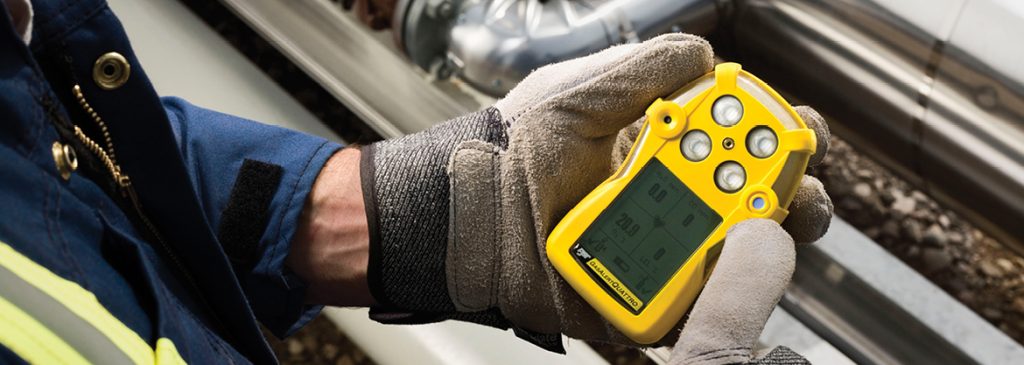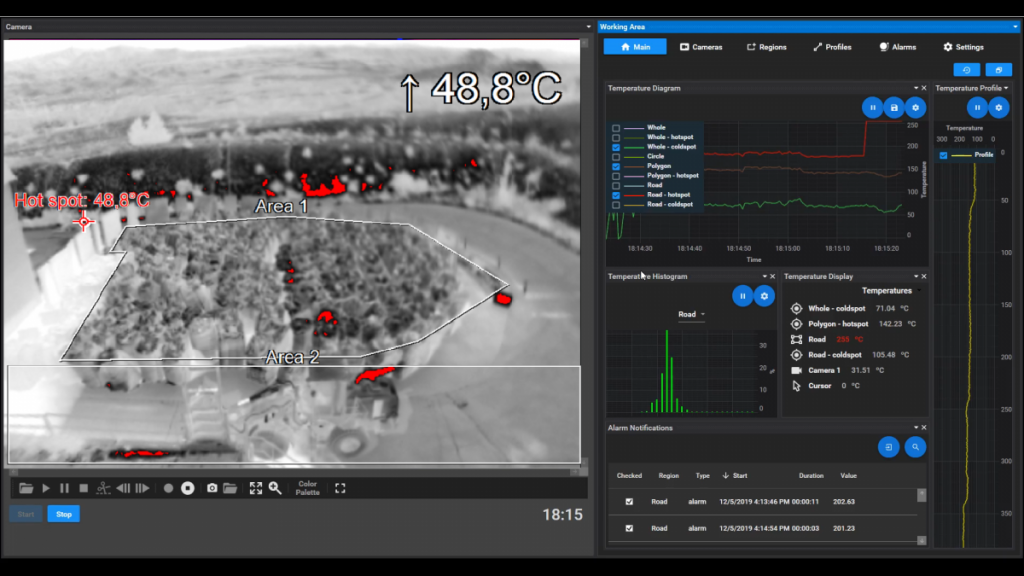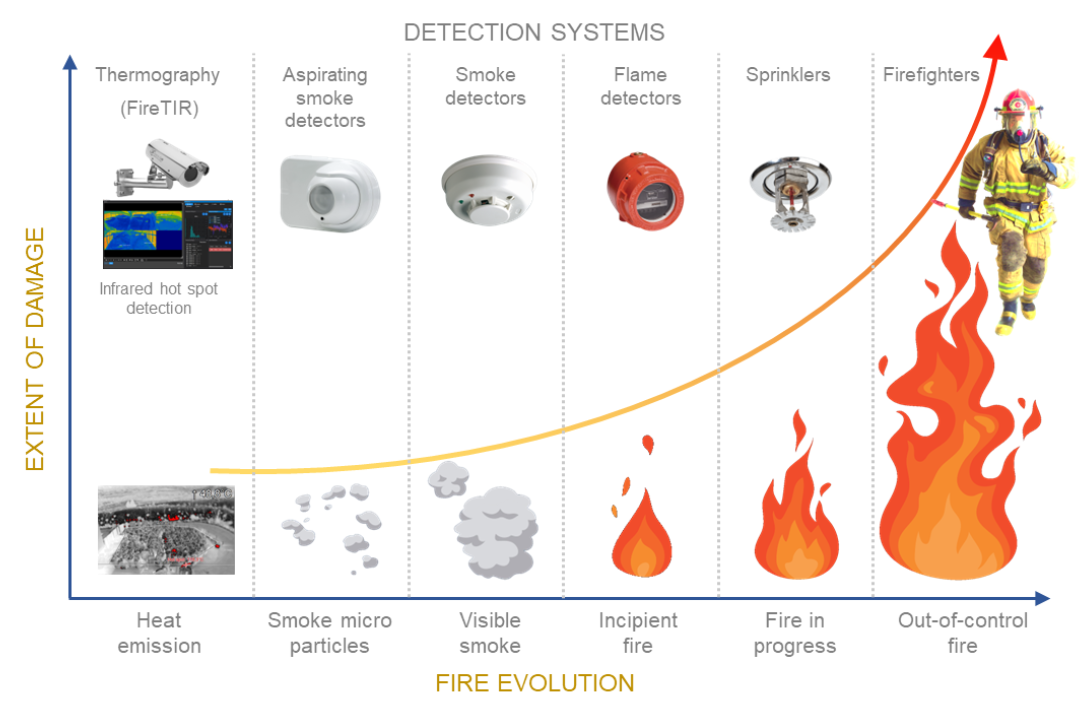Fires, devastating events that can break out at any time, go through several distinct phases as they evolve and spread.
Early detection is essential to mitigate damage and save lives. Below, we will explore the phases of a fire and the appropriate detection systems for each.
Generally speaking, we can identify 5 stages of a fire:
-
Warm-up stage (pre-combustion).
-
Initiation stage: ignition and initial combustion
-
Development stage: growth and spread
-
Stabilization stage: control and containment
-
Extinguishing stage: elimination of the hazard
1. Warm-up stage (pre-combustion)
Before combustion begins, a fire experiences a warm-up stage in which the temperature begins to rise in the affected area. Detection systems for this phase include:
Thermographic cameras: these advanced cameras detect temperature differences on surfaces and can identify areas of abnormal heating, which could indicate an incipient fire.

Thermographic camera in biomass warehouse of cement factory
2. Starting stage: ignition and initial combustion
In this initial stage, a fire begins to develop from an ignition source. Detection systems for this phase include:
- Smoke detectors: Smoke detectors are crucial devices that can alert to the presence of smoke, an early indication of an incipient fire.
- Heat detectors: Heat detectors are effective in detecting abrupt temperature changes in areas where heat is normally generated, such as kitchens.
- Flame detectors: These detectors are capable of identifying ultraviolet and infrared radiation emitted by flame in its early stage of development, providing additional warning of the presence of fire.

Flame detector in industrial facility

Smoke detector installed in offices
3: Development stage: growth and spread
In this phase, the fire grows and spreads rapidly. Suitable detection systems are:
- Multidirectional temperature and smoke detectors: These advanced devices can identify the direction and behavior of temperature, smoke and heat, allowing for more accurate detection.
- Centralized alarm systems: These systems are connected to sensors distributed throughout a building and can alert authorities or emergency services automatically.
4: Stabilization Phase: Control and Containment
At this stage, firefighters and response teams are actively working to contain the fire. Detection systems remain essential to safety:
- Thermal imaging detection systems: These systems can help firefighters identify hot spots and risk areas within the structure in real time.
- Emergency communication systems: These systems allow response teams to coordinate their efforts more effectively.

Thermography of fire in prefabricated house factory
5: Extinguishing stage: elimination of the danger
When the fire is under control, detection systems still play a crucial role:
- Gas monitoring systems: After the fire is extinguished, these systems can detect the presence of hazardous gases, such as carbon monoxide, that may have been released during the fire.
- Post-fire assessment systems: These systems help response teams assess the condition of the structure and ensure that it is safe for occupancy.

Portable Gas Detector (courtesy BW Technologies)
Conclusions
Detection systems play a key role in the management of fires in all their stages. Early detection allows appropriate preventive and response measures to be taken to minimize damage and protect lives. In addition, technology continues to evolve, which means we are better equipped than ever to detect and mitigate fires at all stages. Prevention and preparedness are essential to ensure safety in the event of a fire.
FireTIR: VisionTIR’s Solution for Early Fire Detection

FireTIR Control Panel
The FireTIR® System is a modular and flexible solution based on infrared cameras for early fire detection and temperature monitoring in industrial plants and forest stands.
FireTIR® allows capturing the temperature distribution of a surface in milliseconds, with automatic hot spot detection.
The FireTIR® system software offers full remote control of all infrared cameras, different inspection zone configurations, recording functions and data analysis.









